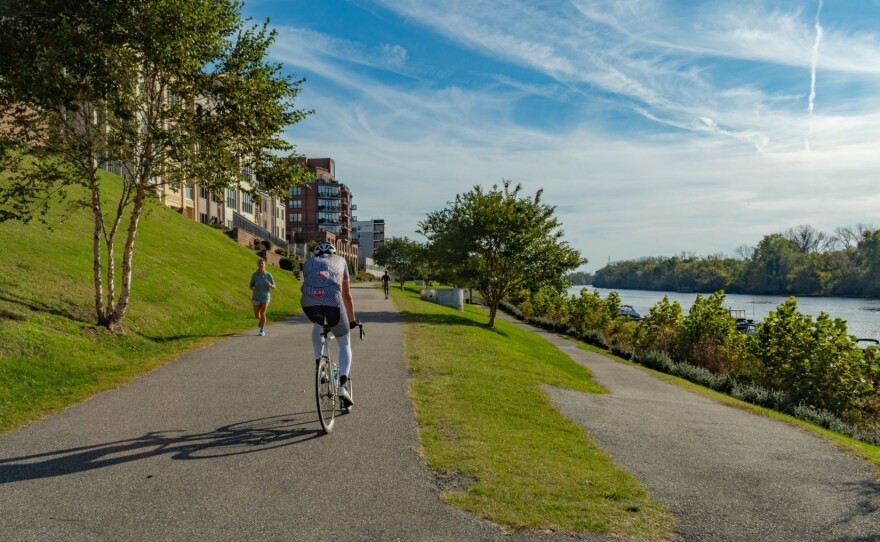Read the original article on WAMU/DCist's website.
The Commonwealth Transportation Board approved a set of changes to how transportation projects are evaluated and how state funding is allocated under Virginia’s Smart Scale program, a key pot of state support.
Since 2016, Smart Scale has given out around $7 billion to help localities with roads, transit infrastructure, as well as bike and pedestrian improvements. The CTB has tweaked the process in the past, but changes have mostly been minor. Transportation experts have generally praised Smart Scale as a balanced approach to funding decisions that doesn’t play favorites among different modes of transportation.
But following Monday’s vote, transit advocates in Northern Virginia said that may no longer be the case.
Ahead of the vote, they raised concerns about the proposed changes, which they said disadvantage larger jurisdictions like Fairfax County and favor highway improvements over standalone bike, pedestrian and transit projects.
State staff, including Transportation Secretary Shep Miller, said the changes are meant to prioritize funding for larger projects and align the program’s economic development priorities with measures used by the state economic development leaders. Staff also said they wanted to limit the number of projects submitted in order to reduce incomplete applications, which they said are burdensome on state staff.
The board approved both of those changes. Board members also voted to redefine how the SmTarEt Scale process measures congestion, from current congestion levels to a projection for seven years in the future, which critics worry is overly speculative.
In a particular blow to Northern Virginia localities and transit advocates, CTB completely removed “land use” — a measure of the density of people and jobs close to a transportation project — as an independent factor in SmTarEt Scale scoring. Northern Virginia projects tended to score well on those measures, because of the region's density. State staff argued the measure weighed too heavily in the current scoring process.
Taken together, Northern Virginia transit advocates said the approved changes could hurt the region’s attempts to create safer, more walkable urban environments instead of suburban sprawl and wider highways. Tying projects to the state’s economic development measures, for example, could have the effect of prioritizing new development — and potential sprawl — over supporting existing business corridors.
Regional representatives on the board did win some concessions, including adding language to define corridor-wide improvement projects, like rail and bus rapid transit projects, as “high priority.”
“The overall impact of the changes is almost certain to lead to reduced funding for cleaner transportation projects while favoring larger highway projects and more speculative development,” said Trip Pollard, a senior attorney with the Southern Environmental Law Center. “Some of the decisions did improve staff’s proposed changes. Getting rid of land use entirely, though, is a big step backward.”
Even Miller, who supported a staff recommendation to reduce the weighting of density, said he believed the board went too far in removing land use entirely — possibly even contrary to the original intent of the legislature in setting up SmTarEt Scale to begin with.
“We’ve flown in the face of, my view, the law. We’ve flown in the face of the administration. We’ve flown in the face of the consultants and the staff,” Miller said, following the vote. “I think it’s a bad decision.”
During the discussion, Miller outlined a vision for state transportation funding focused primarily on roads and traffic congestion, which he believed should continue to be a central goal of the program. He also voiced skepticism about the effectiveness of design updates and streetscape improvements — some of which have historically been funded through SmTarEt Scale — to increase driver and pedestrian safety.
“The deaths that are happening in Virginia are not tied to engineering, they’re tied to behavior,” Miller said. (Last year, the death toll on the state’s roads surpassed 1,000 for the first time.)
Transit advocates disagree, arguing that traffic-calming measures, protected bike lanes and other design elements can prevent fatalities. They also disagree that expanding highways leads to less traffic.
“Secretary Miller does not understand that we can’t ‘solve congestion’ (wider roads fill up again),” wrote Stewart Schwartz, the executive director of the Coalition for Smarter Growth, a group that advocates for walkable urban communities, in a social media post. “We can however use mixed-use, walkable, transit-oriented communities and transit to reduce the need to drive and vehicle miles traveled.”
The board’s vote came after a lengthy and at-times contentious meeting, which lasted for hours and was disrupted by two fire alarms. On multiple occasions, CTB members expressed confusion or a desire to table discussions on certain issues until they could review further data. One member abstained from a vote on the basis of lacking adequate information on the details of the motion. But Miller dismissed those concerns.
“We can’t keep kicking this can down the road,” he said, noting that localities will begin the process of submitting new applications for SmTarEt Scale funding in the spring.


